|
|
Post by primavera on Jan 11, 2008 1:13:09 GMT 8
I've just came back from a wonderful and yet distressing trip, and I can't help but post something here. Here's a macfarlanei seedling after grass-cutters went over the whole place: 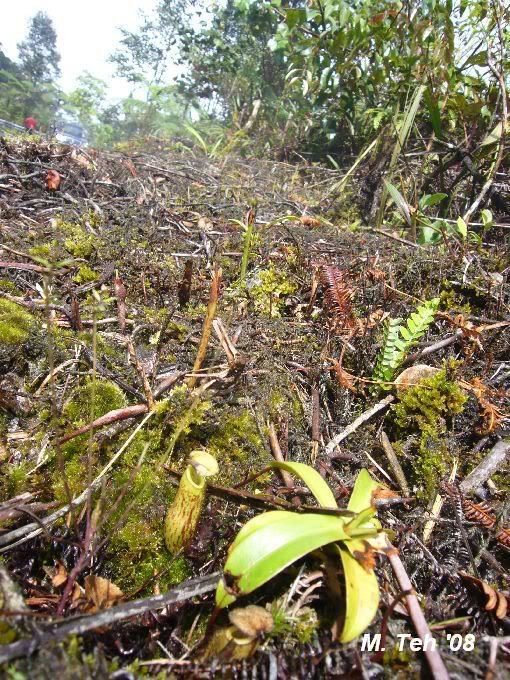 Granted that we do need municipal people to clear the roadsides of 'weeds', it still pains me when they cut back such 'weeds' as nepenthes, orchids and cyathea ferns. Another ramispina getting the chop:  But what really gets me ANGRY  is when unscrupulous people pull out mature plants in hopes of growing it or for the pitchers, severing all the roots in the process, and dumping it in the open to die! See this: 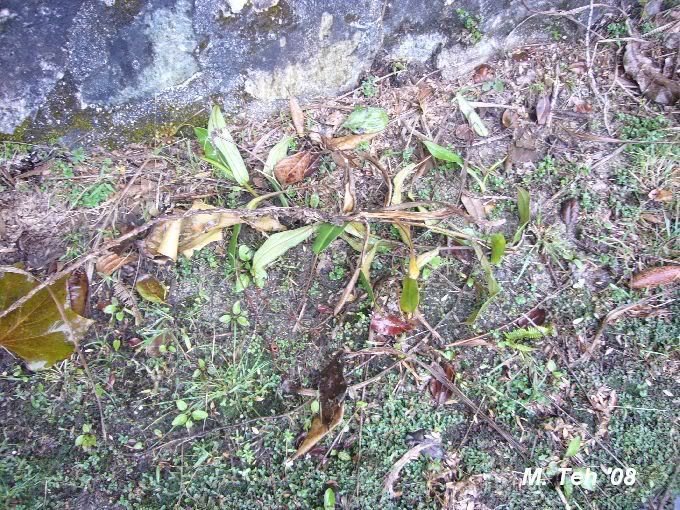 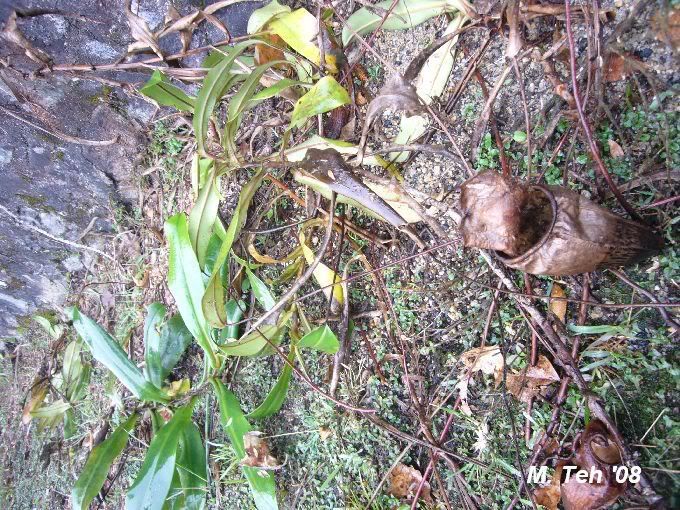 These are all mature vining N. macfarlanei, with one almost blooming! All the nice pitchers were stripped, leaving the leaves and stems, no roots at all. Argh, this really got me fuming when I saw it. Anyway... happy place happy place... I'll show some photos of what I found nearby. |
|
|
|
Post by primavera on Jan 11, 2008 1:24:16 GMT 8
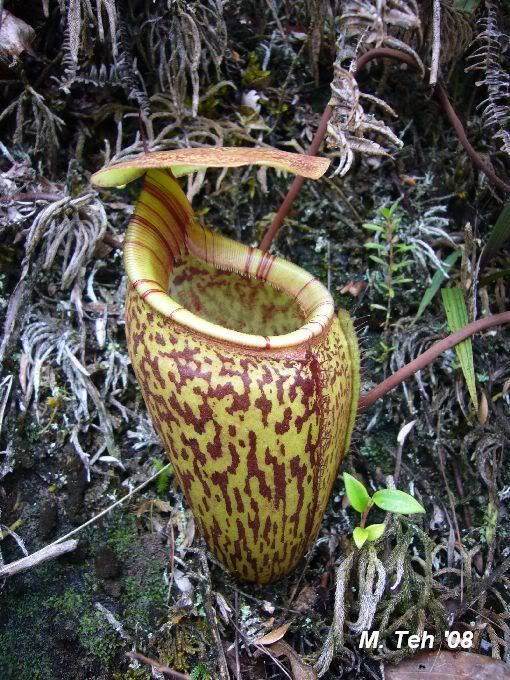 A lower pitcher of N. macfarlanei  A young macfarlanei growing on a rock face. There's a slight overhang at the top, which probably shielded it from direct sun. (They are more shade loving than other highlanders apparently.) 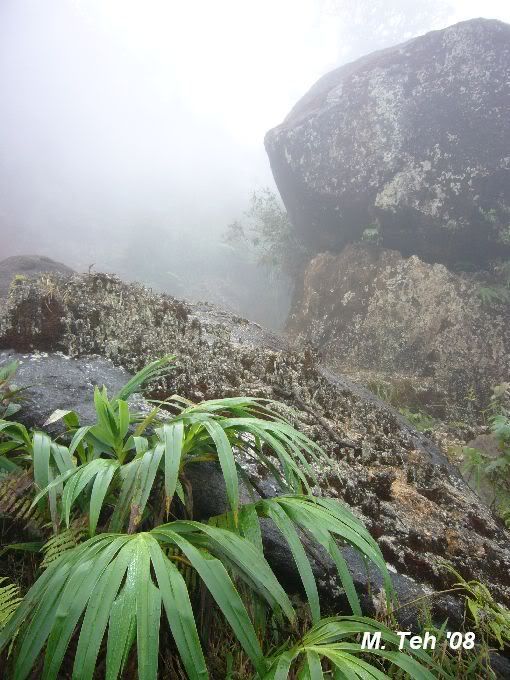 Habitat photos with the mist coming in. 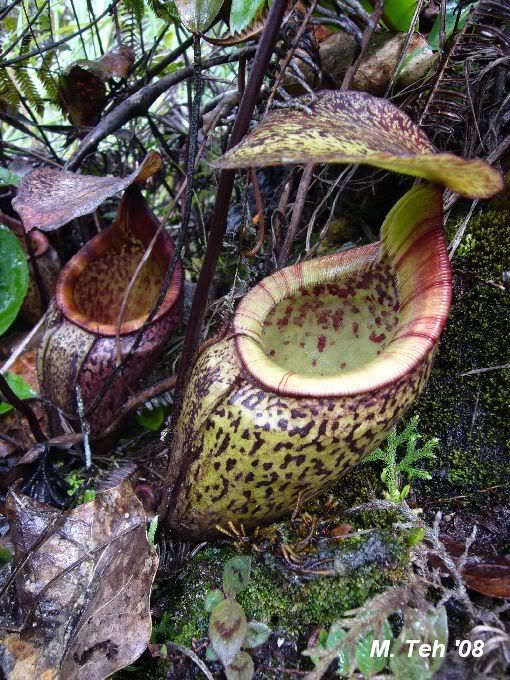 More macfarlaneis 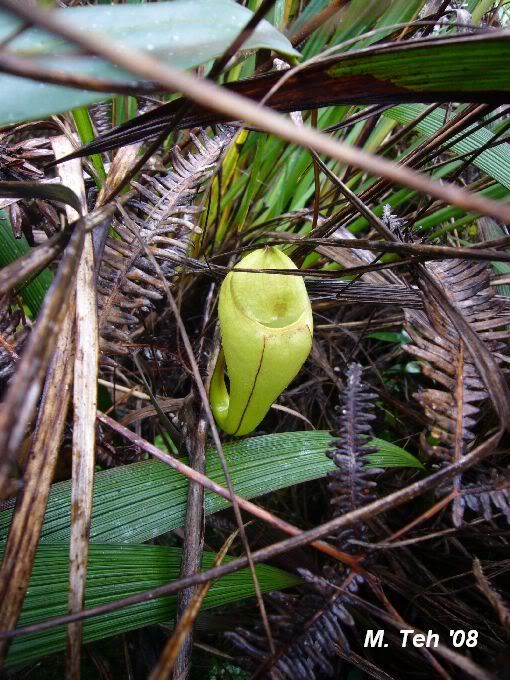 An unfurling macfarlanei upper pitcher 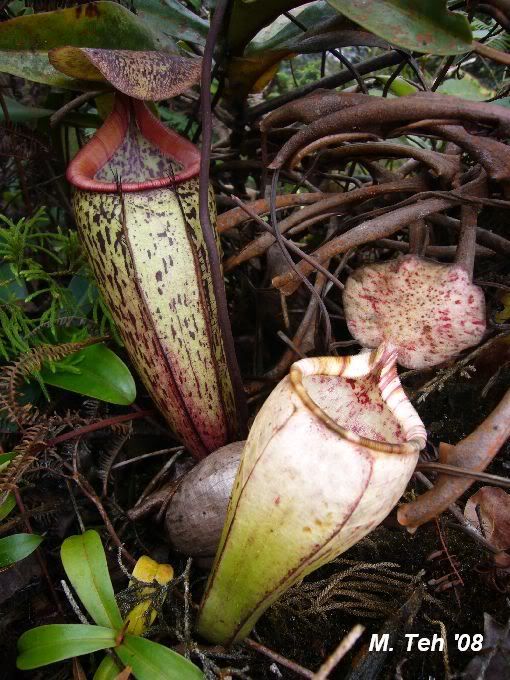 Macfarlanei intermediate (behind) pitcher and upper pitcher. |
|
|
|
Post by primavera on Jan 11, 2008 1:33:21 GMT 8
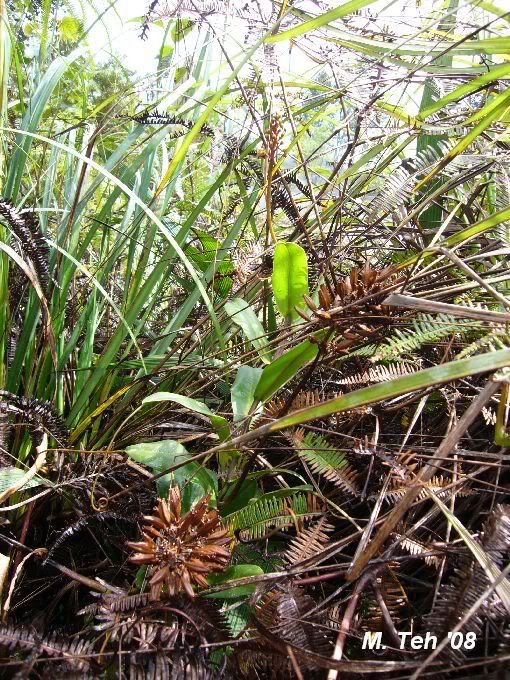 Seeds of macfarlanei 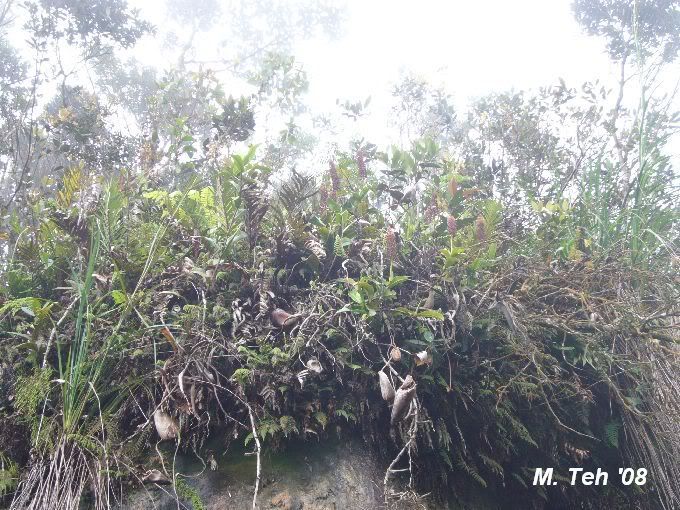 Flowering macfarlanei on the ridge top 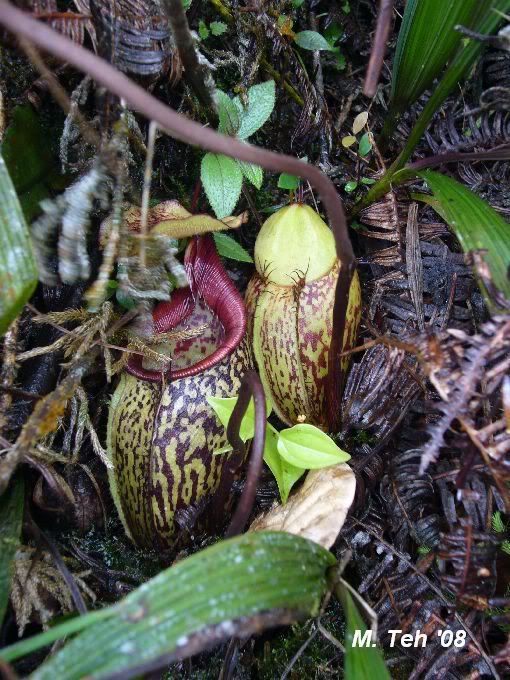 Young macfarlaneis 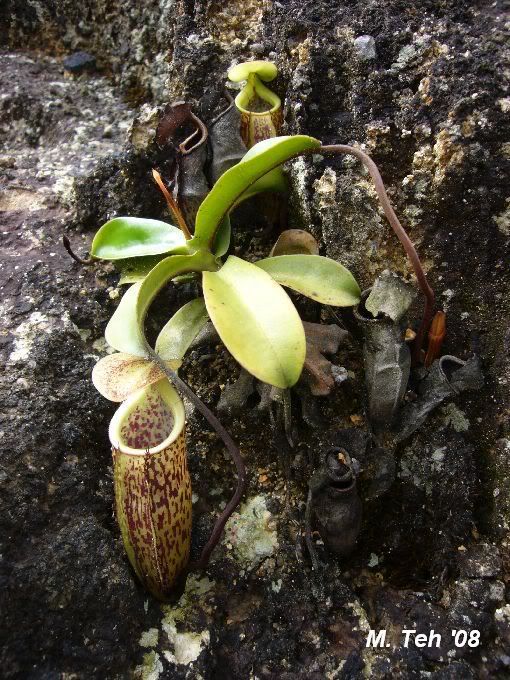 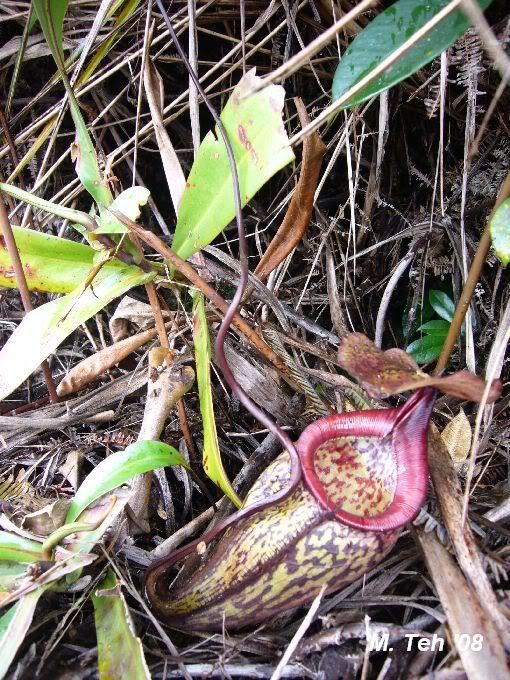 another which got cut by the blades. 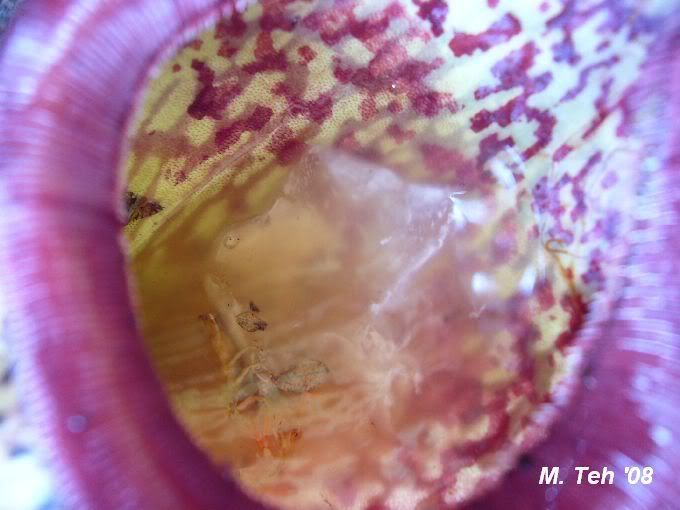 Its pitcher contents were interesting...among which were remnants of a large centipede, can you spot the legs in the pitcher? 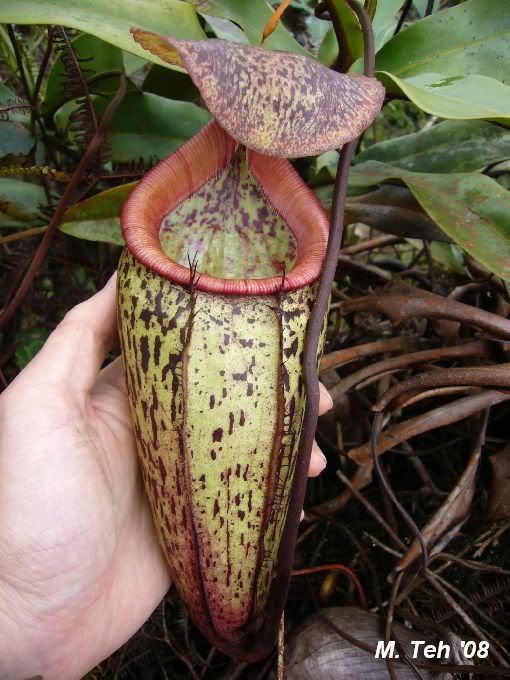 the largest pitcher, found tucked in among bushes and grass. |
|
|
|
Post by primavera on Jan 11, 2008 1:47:42 GMT 8
In another spot nearby, I found other highlanders: 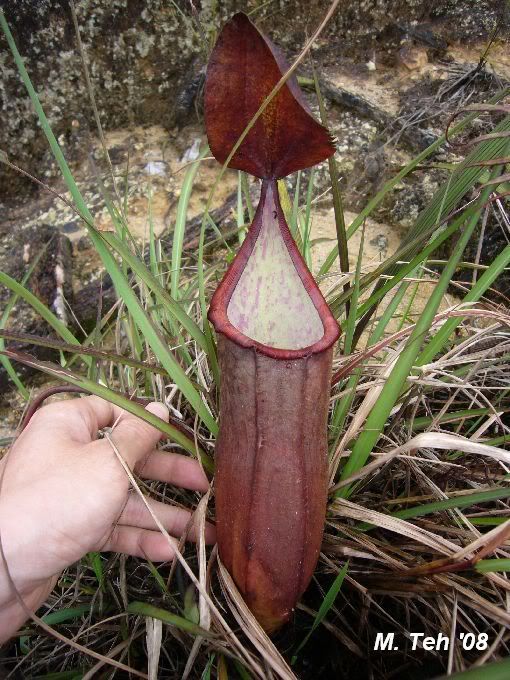 a sanguinea 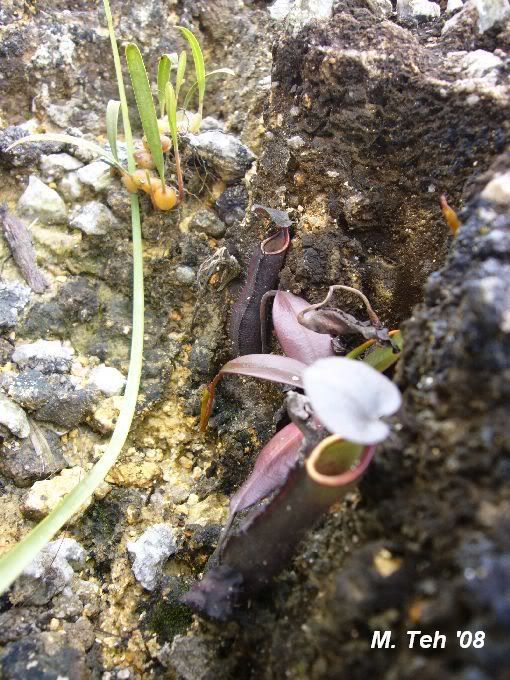 ramispina with an orchid (dendrochilum sp.?) behind. 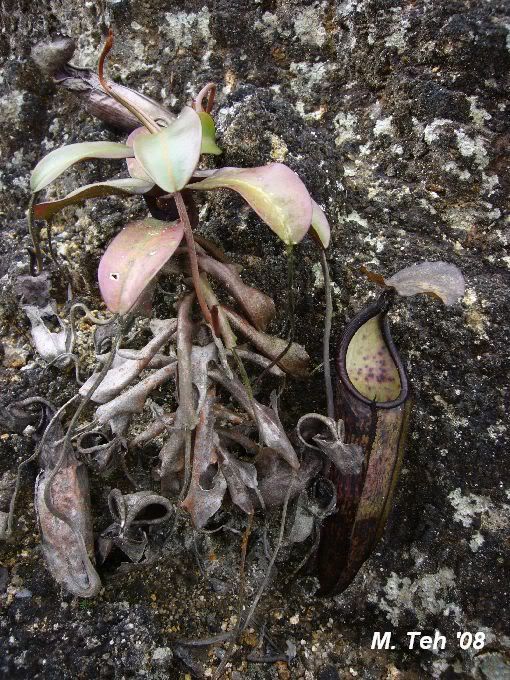 a very dark one, a hybrid of ramispina, sanguinea and a bit of macfarlanei? 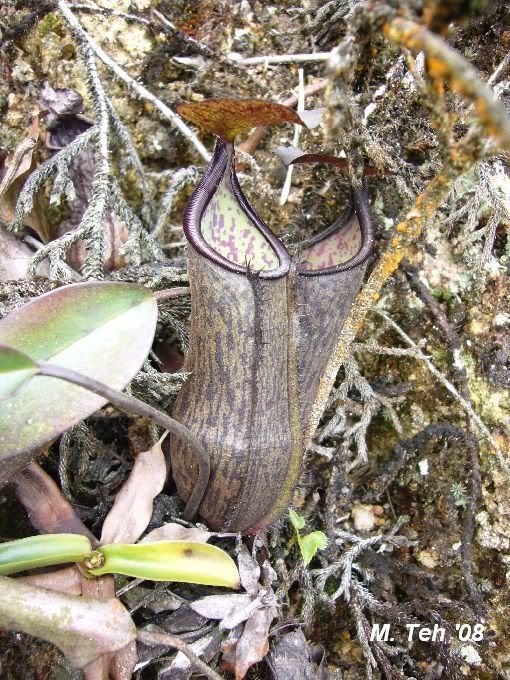 another almost black one 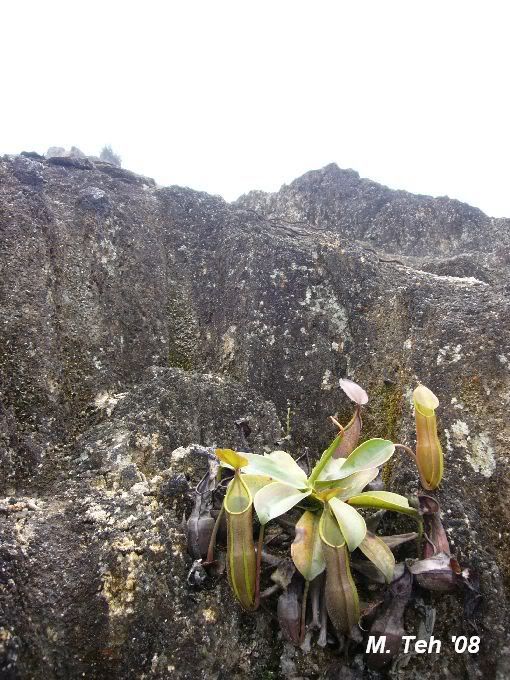 sanguinea growing on a slope 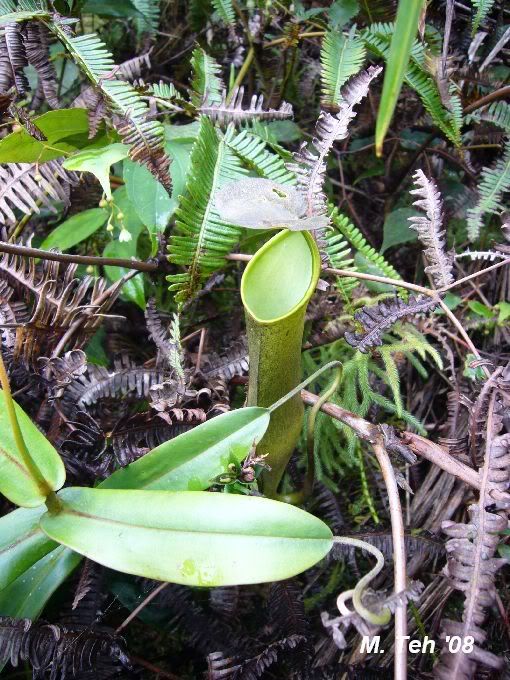 ramispina uppers  ramispina x sanguinea vine 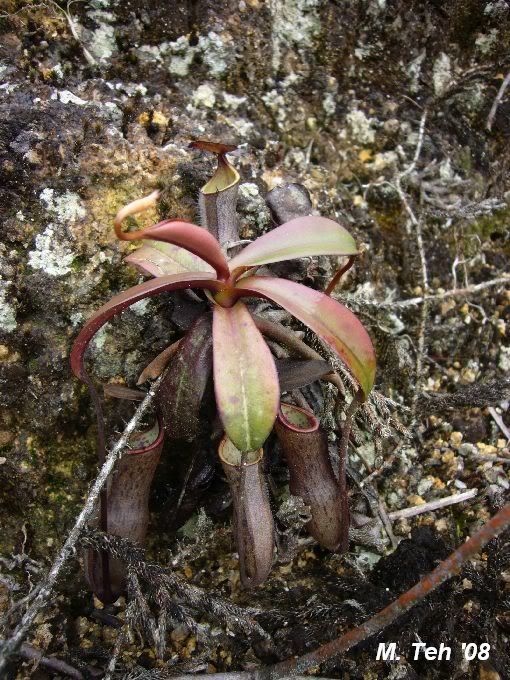 sanguinea seedling |
|
|
|
Post by ameliepoulain on Jan 11, 2008 2:51:21 GMT 8
Primavera, If you don't mind, could you please explain to me how to differenciate between a n. sanguinea & a n. ramispina. Been asking around, but nobody seem to be able to give a straight answer  |
|
|
|
Post by primavera on Jan 11, 2008 3:18:50 GMT 8
Sure thing. The defining feature is the spur, which is situated behind the area where the lid joins the peristome. In ramispina, the spur is elaborately branched, whereas in sanguinea it is not.
I also tend to associate ramispina with very dark, almost black pitchers, with pale green insides. Also, the upper pitchers are light green with little or no spotting, and very conical. Sanguinea tends to be much more colourful, and the pitchers more bulbous.
ps: I used to live at 'Ara river'.
|
|
|
|
Post by bucky78 on Jan 11, 2008 10:25:22 GMT 8
Absolutely gorgeous pics. Thank you so much for sharing. Please keep them coming!
|
|
|
|
Post by rainforestguy on Jan 11, 2008 10:33:11 GMT 8
The soil where these plants grow, are they solid rock, limestone, or ?
Is there much algae, lichen, or other vegetation growing ON the rock itself?
M
|
|
|
|
Post by isaacgoh on Jan 11, 2008 10:57:53 GMT 8
Whoa....these photos are great!
Will plan a trip up Cameron this year to visit them.
Rgds,
Isaac
|
|
|
|
Post by primavera on Jan 12, 2008 1:53:44 GMT 8
Michael, these habitats are mostly secondary/degraded highland moss forests, and growing over what I can see as clay/rock substrate. Not sure what kind of rock but it is definitely not limestone, as there are no karst or cave formations in this area.  This macfarlanei grows in a pocket of moss on the rockface, on very precarious position I must say. There is a lot of white patchy lichens, mosses and blackish algae on the rock face. However, most of the macfarlaneis are found in the undergrowth, growing among mosses. Sanguineas and ramispinas are found in more exposed areas. |
|
|
|
Post by primavera on Jan 12, 2008 2:16:26 GMT 8
More photos of other stuff: 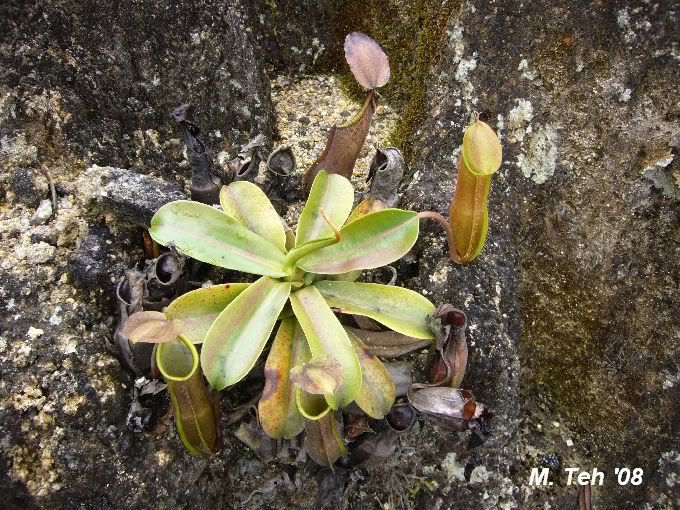 A sanguinea growing in very exposed conditions, on eroded clayish soil covered with mosses and lichens.  A beautiful mound of reddish mosses on a rock. Reminds me of those Chinese 'penjing' compositions. 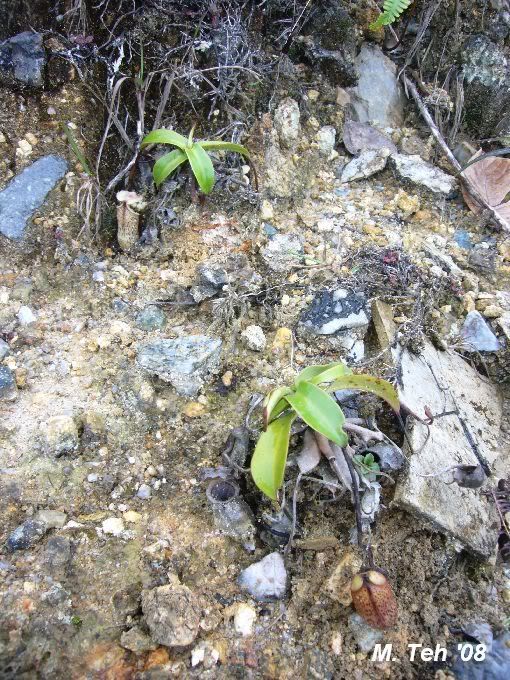 Some young macfarlaneis dislodged after heavy rains/soil erosion, among a pile of rubble and tiles.  pink berries of a groundcover 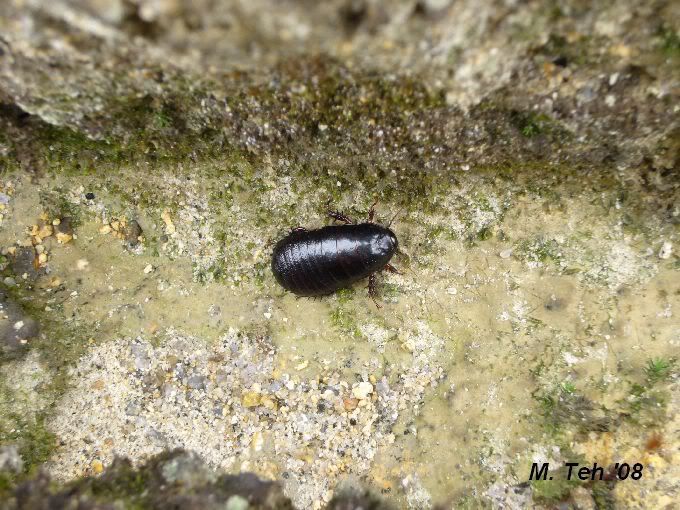 a jungle cockroach 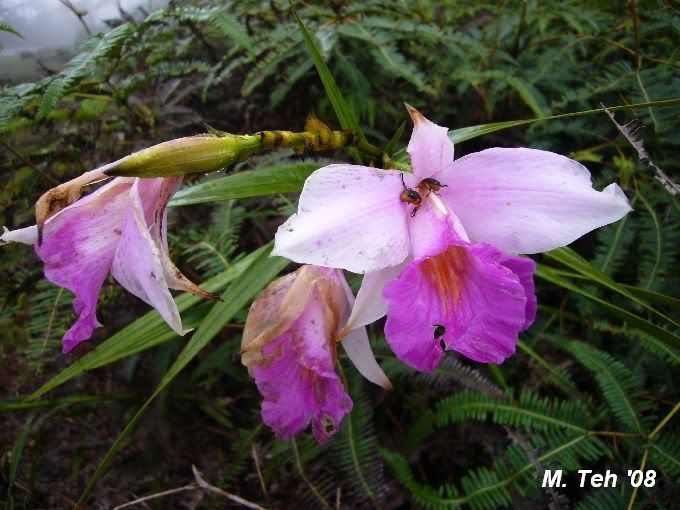 Arundina graminifolia orchids with curious beetles  The iridescent green beetles closer up. They are eating the flower, simply beautiful though, reminding me of the Egyptian jewel scarabs. 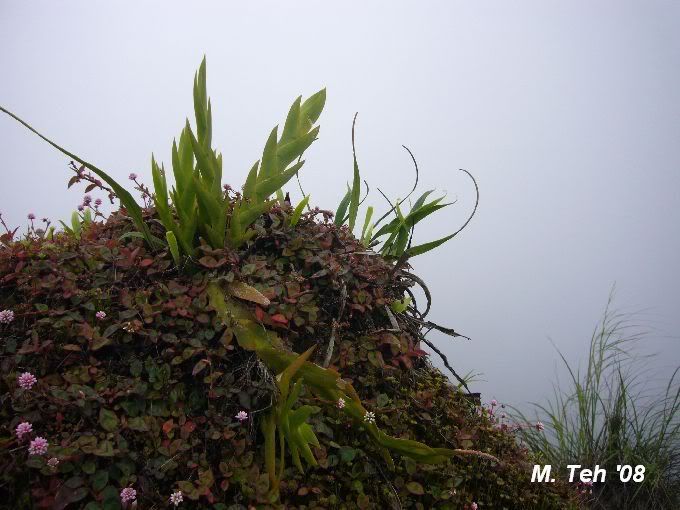 Looking out over the cliff, a mound of orchids, mosses and creepers, with the mist coming in. Many of these photos were taken in the rain, as the mist sweeps in and raindrops start falling. The sky was playing hide and seek with me, one minute you'll see clear sky and another- everything shrouded in mist, with the rain pelting down on you. Safe for the human destruction, it was a truly magical place, one that beckons me to go back. |
|
|
|
Post by David on Jan 12, 2008 15:14:31 GMT 8
Thanks fo sharing these pictures. I can never get tired of looking at nepenthes in the wild. Must be an enjoyable trip for you... minus the sad end of some of these plants.
Love the macfarlanei pictures. I wonder how that centipede got into the pitcher. Always thought they crawl on the ground rather than up nepenthes vines. Perhaps it was trying to steal a meal from the pitcher and fell into the trap. It always intrigues me to see what the pitchers can catch.
Mike, the last time I was in Cameron Highlands, among their habitat, I noticed the media is mostly sand mixed with laterite. This media has compressed and hardened over time and nepenthes grows on them. The black colour is just dirt or dead moss on top due to the constant rain and mists.
|
|
|
|
Post by phissionkorps on Jan 12, 2008 15:21:05 GMT 8
awww  Well maybe you should've sung it a song?  |
|
|
|
Post by David on Jan 12, 2008 15:25:23 GMT 8
Ok, there was a typo mistake there. It's suppose to be "sand" instead of "sad"
|
|
|
|
Post by phissionkorps on Jan 12, 2008 15:47:29 GMT 8
it wasn't layered or anything was it? I'm thinking about getting some laterite and trying it out. I know this may be impossible, but any way you can kind of guess the percent composition of each of the components?
|
|
|
|
Post by David on Jan 14, 2008 9:11:51 GMT 8
I didn't dig deep into the media to check but the media composed of laterite/hardened laterite (kinda like grains of sand), clay and lots of sand a few inches from the surface.
Hmm, I'm guessing perhaps 50:40:10 (sand:laterite:clay) or maybe 50:30:20 (sand:laterite:clay).
|
|
|
|
Post by primavera on Jan 14, 2008 19:40:50 GMT 8
Yeah David, it was an enjoyable trip. About the centipede, the lower macfarlanei pitchers actually sit on the ground. The plant bears really long tendrils that grow all the way down for the pitchers to form on ground level. The centipede probably dropped in for a swim  and drowned! With using laterite, it depends on where the laterite is collected. Some are very fertile as it has a high cation binding capacity, meaning that it holds nutrients that it comes in contact with very well, not too good for nepenthes. For some of my mirabilis and albos, I'm using local laterite or topsoil which have been exposed to the rain for many months with some success, top half mixed with coconut chips (mainly because coconut chips are hard to come by, had to improvise to fill the pot!). I would say go for as poor a laterite as you can find, or leach it with rainwater/RO. Those that you see in the picture, they support little vegetation other than mosses and small plants, very eroded. |
|
|
|
Post by phissionkorps on Jan 14, 2008 20:05:48 GMT 8
|
|
|
|
Post by David on Jan 14, 2008 22:35:02 GMT 8
I think in my next trip to see neps in the wild I'll spend a little more time noticing the media and take macro pictures of it. However, I think different locations where nepenthes grow has slightly different composition. Perhaps Robert can explain better here as he has seen more wild neps than I have eaten salt. ;D
I think a few members here from Malaysia are growing their neps in this natural media. However, I agree with you that we have to be careful where we get the media or laterite. Those who were successful in growing their neps in this natural media got the media from locations where neps naturally grow.
Sometimes I wonder how the nepenthes roots thrive in clay and compact laterite/sand media. Don't seem to have any airflow to the roots. Perhaps its the water movement beneath the media that brings oxygen to the roots and flush nutrients/minerals away. The media always seems dry on top but just 1 inche or more below, it's always wet.
|
|
|
|
Post by Robert on Jan 14, 2008 23:47:07 GMT 8
The ground looked compact to our naked eyes but the openings were microscopic and loose with high sandy and coarse clay components allowing for aeration and fast water seepage. This explain why in any heavy downpour the ground was instantanously dry after the rain was over. such natural phenomenon can be seen in highland and lowland heath forest.
Another point to note were the moisture laden winds that constantly and repeatedly blow over the mts, condenses on the ground and plants it came into contact ( the last photo was significant and explain the whole relationship but unless one visited such habitat in person may not "feel" the significant ). water that didn't have the chance to seep undergroung evaporates.
|
|